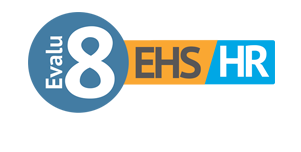What is a compensation and benefits package?
What are the benefits of implementing competitive compensation and benefits packages?
1. Attracting top talent: By offering competitive packages, you can attract top talent who may not have considered working for your organization otherwise.
2. Retaining top talent: Once you’ve attracted top talent, competitive packages can help to retain them. Employees are more likely to stay with an organization if they feel that they are being fairly compensated and have access to attractive benefits.
3. Improving employee satisfaction: When employees feel that they are fairly compensated and have access to good benefits, they are more likely to be satisfied with their jobs. This can lead to improved morale and productivity.
4. Reducing turnover: High turnover can be costly for an organization, both in terms of time and money spent on recruiting and training new employees. By offering competitive packages, you can reduce turnover and improve retention.
5. Enhancing your reputation: Organizations that offer competitive packages may be perceived as more desirable places to work, which can enhance their reputation in the job market and make them more attractive to top talent.
6. Driving business success: By attracting and retaining top talent, you can drive business success through improved productivity, innovation, and customer satisfaction.
Who are you trying to retain?
It’s important to understand who you are trying to attract and retain. Consider factors such as the industry you are in, the types of roles you are hiring for, and the geographic location of your organization. This will help you determine what types of compensation and benefits will be most attractive to your target audience.
Researching market rates
Reviewing current compensation and benefits packages
Then, review your current compensation and benefits packages to see how they compare to market rates and what changes may be needed. Consider factors such as salary ranges, bonuses, and perks such as health insurance, retirement plans, and vacation time. Determine what changes can be made within your budget, and prioritize those that are most important for attracting and retaining top talent.
Communicating changes to employees
Once you have your new compensation and benefits packages in place, be sure to clearly communicate the changes to your employees. This will help them understand the value of their packages and feel appreciated and valued.
Regularly reviewing and updating packages
Finally, it’s important to regularly review and update your compensation and benefits packages to ensure that they remain competitive. This could involve conducting market research and making changes as needed.
By implementing competitive compensation and benefits packages, you can attract and retain top talent and drive business success. Don’t wait any longer to get started!
BONUS:
Monitoring and measuring the results of your compensation and benefits packages is an important step in determining whether they are effective at attracting and retaining top talent. By tracking metrics such as employee retention rates, employee satisfaction, and business performance, you can gain insight into the impact of your packages and make adjustments as needed.
To monitor and measure the results of your packages, you may want to consider implementing the following strategies:
1. Track employee retention rates: One key metric to track is the rate at which employees are leaving your organization. If you are experiencing high turnover, it may be a sign that your compensation and benefits packages are not competitive or that there are other issues that need to be addressed.
2. Measure employee satisfaction: Surveying employees on their satisfaction with their compensation and benefits packages can provide valuable insight into whether they feel valued and appreciated by the organization. This can help you identify any areas that need improvement.
3. Monitor business performance: Tracking key business metrics such as sales, profits, and customer satisfaction can help you to understand the overall impact of your compensation and benefits packages on business performance.
By monitoring and measuring the results of your packages, you can gain a better understanding of their effectiveness and make any necessary adjustments to ensure that they are helping to attract and retain top talent.
Here are five ideas you can consider working in to your new competitive compensation and benefits packages:
1. Competitive salaries: Offering competitive salaries can help to attract top talent and improve employee retention. To determine what is considered competitive, it’s important to research market rates for similar roles in your industry and location.
2. Bonus and incentive programs: Implementing bonus or incentive programs can help to motivate and reward employees for their contributions. This could include things like performance-based bonuses, commission structures, or profit-sharing programs.
3. Health benefits: Offering comprehensive health benefits, such as medical, dental, and vision insurance, can be a key factor in attracting and retaining top talent.
4. Retirement benefits: Providing retirement benefits, such as 401(k) plans or pension programs, can be an important part of a competitive compensation and benefits package.
5. Work-life balance benefits: Offering perks that promote work-life balance, such as flexible work arrangements, telecommuting options, and generous vacation time, can help to attract and retain top talent. These types of benefits can also improve employee satisfaction and productivity.



